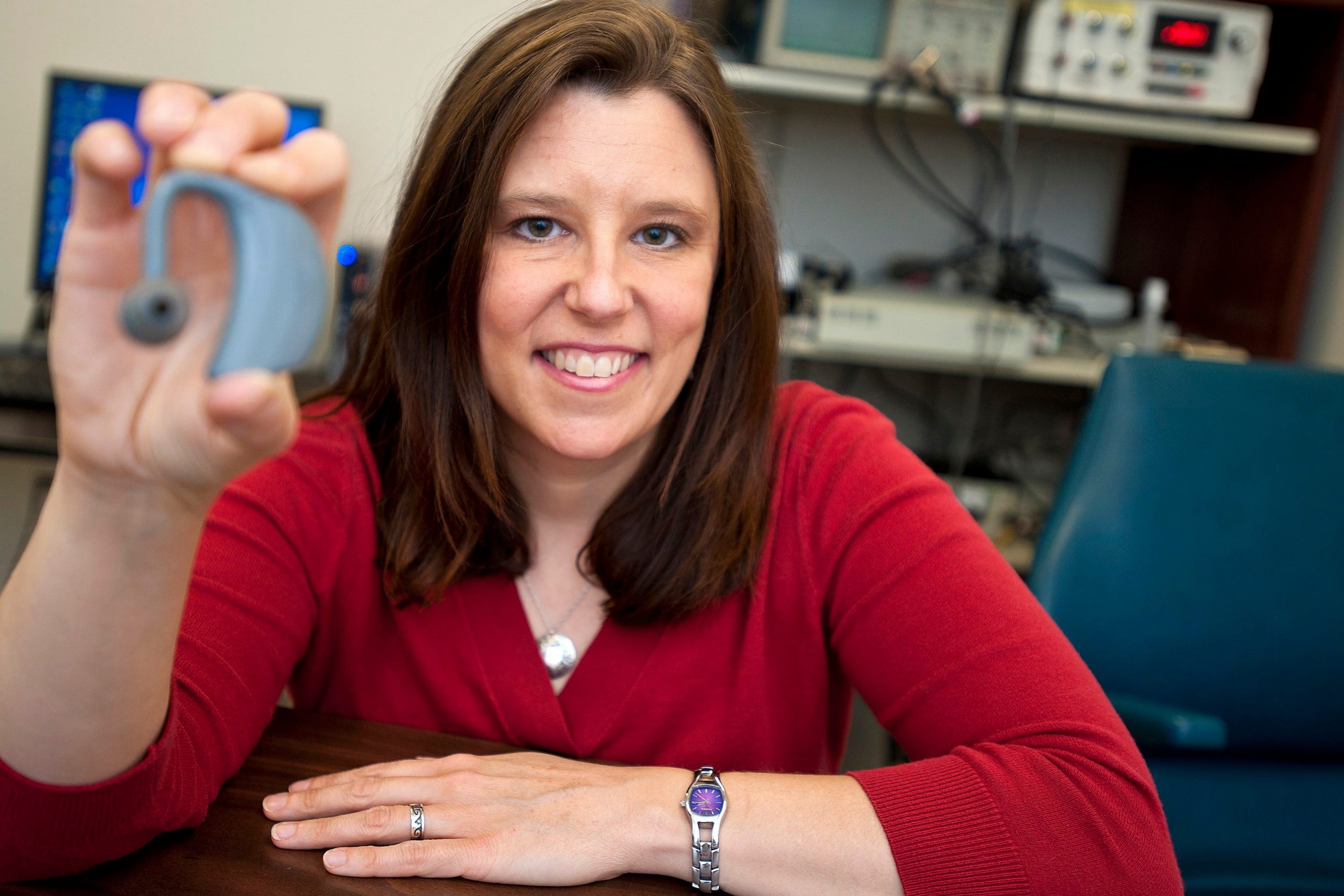Speech Device Aims to Reach More Parkinson’s Patients
 About the size of a hearing aid and worn over one ear
About the size of a hearing aid and worn over one ear
Subscriber Benefit
As a subscriber you can listen to articles at work, in the car, or while you work out. Subscribe NowThe most commonly recognized symptom of Parkinson’s disease is the tremor that affects the limbs of the body, but the vast majority of patients—the National Institute of Neurological Disorders and Stroke says nearly 90 percent—will also experience changes to their voice. For almost half of all patients, these changes are severe enough to impact their ability to communicate. To help relieve this symptom, a Purdue University researcher has created SpeechVive, a device that helps restore a patient’s voice. While the technology has been limited to people who can visit a speech pathologist’s office, the startup is launching a telehealth effort, so patients near and far can find their voice again.
Speech problems associated with Parkinson’s cause a weak or quiet voice, and the rate of speech often increases, resulting in slurred articulation. The combined effect is a frustrating inability to communicate clearly.
Purdue Professor of Speech, Language and Hearing Sciences Dr. Jessica Huber’s device relies on the Lombard effect, the reflex that causes a speaker to increase their vocal effort when surrounded by loud noise.
“All of us do this in noise; we naturally talk louder, articulate more clearly,” says Huber, “and we tend to slow our rate.”
About the size of a hearing aid and worn over one ear, SpeechVive is triggered when the patient begins to speak. The device, made entirely in Indiana, plays loud “background” noise in the person’s ear that sounds like “everyone talking at once at a cocktail party, but you can’t really understand what anyone is saying.”
“The Lombard effect basically counteracts—through a reflex—some of the changes with their speech,” says Huber, who is SpeechVive’s chief technical officer. “It makes their rate more normal, so they’re not talking as quickly, and often their articulation gets clearer or more distinct.”
However, Huber says SpeechVive’s ability to help Parkinson’s patients has been hindered by one factor: the device must be calibrated to the patient’s unique vocal characteristics, and that requires an in-person visit with a speech pathologist.
“We need to make sure the device turns on and off in a timely fashion relative to when they start and stop speaking, and that it’s eliciting from them the type of voice we want—the intensity of their voice,” says Huber. “We want to make sure everything is set specifically for that patient.”
However, it can be difficult for many Parkinson’s patients to visit a pathologist, because physical impairments are common with the disease, and rural areas lack the large medical centers that often house specialists such as speech pathologists. Fueled by a recent dose of more than $2 million in funding, SpeechVive is now building a telehealth program that will allow speech pathologists to connect—via the Internet—to patients anywhere in the world to calibrate the device.
“The patient will have the device at their home, log on to the telehealth platform and have the device connected to their computer,” says Huber. “The speech pathologist will log on in his or her office to the telehealth platform and connect remotely with the patient. They’ll be able to see and hear the patient and also control the device.”
SpeechVive is partnering with West Lafayette-based Cellaflora, founded by Purdue graduates, to build the telehealth application. Huber says the funding—from the National Institutes of Health, BioCrossroads’ Indiana Seed Fund II and The Purdue Foundry—will be “transformative” for the young company, potentially opening a new segment of business.
“A [speech pathologist] may also want to use the telemedicine application to see someone via the Internet who’s had a stroke or traumatic brain injury,” says Huber. “The potential for this to become a platform for speech pathologists more generally is quite strong. We see this not only as advancing the SpeechVive business, but also providing the potential for a second product line.”
After studying the effectiveness of the telehealth application, SpeechVive expects to launch the service in less than two years.
“I can see it really making a difference for patients,” says Huber. “We are very often asked by patients who live in very rural areas of the U.S. and cannot travel to be seen by a speech pathologist how to access SpeechVive from their homes. It’d be really nice to have an answer for them.”
In addition to calibrating the device, Huber says the telehealth application could enable follow-up care.
Huber says telehealth is important for Parkinson’s patients, who often have physical impairments, in addition to speech impairments.

